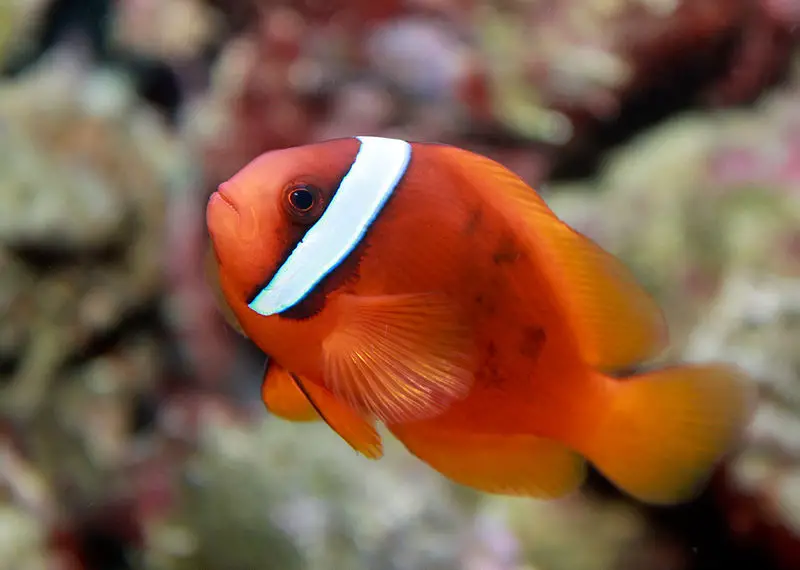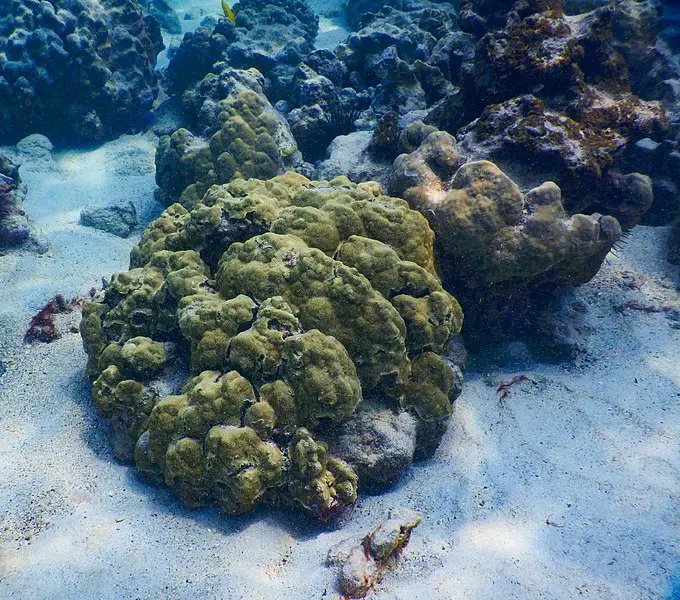Home aquarium enthusiasts who intend to keep marine creatures need to be aware of the proper water conditions to support good health and wellness of the fish, as well as their symbiotic friends. Specifically, when it comes to clownfish aquariums, these creatures need a unique level of salinity to help them thrive.
Clownfish require higher salinity levels in general. You want to keep their tank water at or close to 1.023 specific gravity (1.020 at the least and 1.026 at the most). This should be accompanied by a salinity of 34-36 parts per trillion (PPT).
To learn more about the proper saltwater conditions for a clownfish aquarium, keep reading. In this guide, we’ll be highlighting everything you should know about maintaining a marine environment for these fish and answering frequently asked questions along the way. Let’s get into it!
The Right Clownfish Salinity Conditions
The correct saltwater conditions are crucial for the wellbeing of a clownfish, whether it’s in a home aquarium or open waters. This is due to the fact that the native waters of this fish are naturally saline (oceans, lagoons, and reefs). With a salinity level that is too low, a clownfish is at risk for the following:
- Premature death (within hours)
- Severe illness
- Poor health
Furthermore, if you keep anemones or other marine creatures in your clownfish aquarium, when you jeopardize the health of the clownfish, you also jeopardize the health of the other creatures. Because clownfish and fellow tank-mates often share a symbiotic relationship, everyone has to be in tip-top shape at all times.
In general, a clownfish aquarium should adhere to two guidelines when it comes to the saltwater: 1.) Salinity of 34-36 PPT, and 2.) a specific gravity measured between 1.020-1.026.
Salinity for Different Varieties of Clownfish
Keep in mind that clownfish (amphiprioninae) exist in dozens of species spread between two different genuses. For each of those species, there is a more specific salinity level that will best meet their needs. Take a look below at some of the salinity ranges necessary for four popular species of aquarium clownfish.
| Ocellaris (common) clownfish | Saddleback clownfish | Clark’s anemonefish (clownfish) | Pink skunk clownfish | |
| Salinity Level | 1.020-1.024 sp gr | 1.023-1.025 sp gr | 1.023-1.025 sp gr | 1.020-1.025 sp gr |
Further, you should always remember to regularly test the salinity level in your tank to ensure that it’s within range. As soon as you notice signs of a clownfish in poor health, you should recheck the tank salinity and fix it if need be, as every moment is crucial for the fish’s survival.
Is 1.028 salinity too high?
In general, you should never exceed the salinity range for anemonefish in your home aquarium. Since the various species of clownfish shouldn’t exceed a water salinity of about 1.026 sp gr, 1.028 is too high for the specific gravity.
If the water gets too salty, not only will your clownfish suffer; but so will the other creatures in the tank such as anemones. Specifically, as the salinity rises too high in the tank, the water becomes too thick for the fish to breathe in.
They may die of respiratory issues in worst-case scenarios if you can’t lower the salinity level to normal in time.
Can clown fish live in salt water?
Not only can clownfish live in saltwater; they thrive in this environment. An aquarium without a saline water solution is not going to support the life of any anemonefish or associated anemone creature.
Clownfish are native to saltwater habitats such as the Pacific Ocean waters and Red Sea, warm coral reefs, and even lagoons. That’s why aquarium providers make special products to adjust the salinity of your tank water.
What is the right salinity for a saltwater tank?
The right salinity level for a saltwater tank entirely depends on the type of aquatic life you intend to keep inside of it. For example, clownfish typically need salinity levels close to 1.020-1.026 specific gravity.
On the other hand, a saltwater tank for, say, a saltwater angelfish requires the salinity to be closer to 1.024-1.025 sp gr (especially if the tank houses a reef). Further, a saltwater frogfish (also known as the anglerfish) requires tank water with a salinity between 1.020-1.025 sp gr.
In general, though, most saltwater tanks shouldn’t get below 1.020 sp gr or above 1.026 sp gr.
What salinity is too high for clownfish?
Any time your tank water reaches above 1.026 specific gravity, you are venturing into the danger zone for the health of your clownfish.
Most species of anemonefish don’t even require a salinity higher than 1.025, so there should be no reason that your tank gets above 1.026 unless there’s something wrong with the tank or other water parameters.
Can you use table salt for clownfish aquariums?
It’s never wise to use table salt (NaCl) or the salt cook with to make a saltwater aquarium. There is a reason that aquarium companies and pet stores sell saltwater solution products, and you should take advantage of them.
Not only do saltwater mixes and aquarium salts make the process much easier; but they also ensure that you are achieving the right environment to keep your clownfish healthy.
Even the additives in store-bought table salt can harm the clownfish, so it’s best to stay away from it entirely.
Final Thoughts
If you’ve been looking for answers regarding how to maintain the salinity levels in your clownfish aquarium at home, hopefully our guide has cleared things up for you. Clownfish require saltwater conditions, as that environment best mirrors their native ocean environment.
If you don’t provide the right salinity level in your tank (between 1.020-1.026 sp gr depending on the species), your clownfish could quickly become ill and even die. Make sure that you are aware of the specific gravity requirements for the species of clownfish you plan to care for at home and regularly check and maintain the levels.
And remember, never use table salt to mix the saline solution in your tank. Good luck, and have fun caring for your clownfish!


